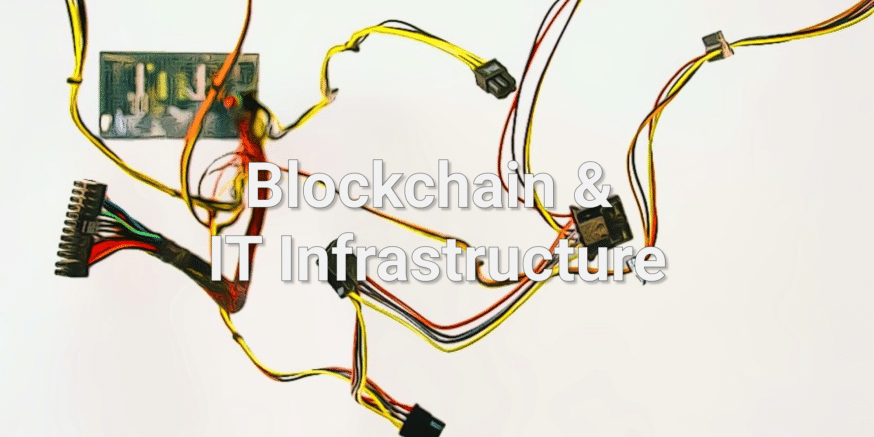Blockchain & IT Infrastructure
Advancements in blockchain technology have certainly had a major impact on the cryptocurrency market. As new tokens present alternatives to old financial systems, many people are perhaps overlooking the power of blockchain technology behind the projects themselves. Let’s take a look at some of the biggest blockchain projects on the market today and how they can potentially influence the future of IT infrastructure.
File Storage
When most people think of file storage from a traditional standpoint, it seems like a binary system. Either you have enough storage or you don’t. Just a few decades ago, people had to rely upon CDs and floppy disks, which were slow and added very minimal amounts of memory. Of course, external hard drives improved this. Finally, today there are cloud storage solutions like Dropbox, OneDrive, iCloud, and others that offer some degree of improvement. While these solutions are better, they are still far from optimal.
Blockchain projects like Filecoin (FIL) and Storj (STORJ) could be the solutions that change the future of file storage. First of all, these solutions are considered to be much better than today’s most popular cloud storage products because they promise to have higher bandwidth and fewer unexpected outages. In addition, decentralized file storage applications also address the issue of privacy. Because traditional cloud storage products hold data in centralized databases, every user’s files are at risk of being hacked. In fact, this happened to Dropbox back in 2012 when 68 million users were hacked. The most alarming thing is that the company didn’t even report this issue until 2016. With decentralized file storage solutions, hacks are extremely more difficult to execute, and any data breach wouldn’t affect nearly as many users.
Another vital component driving the adoption of decentralized file storage is the fact that prices will be much lower than current solutions. That’s because files will be stored across a P2P network instead of via expensive database centers. This will likely be done by using cryptocurrency payments as incentives for individual users to join the network.
Check out our complete guide to decentralized file storage solutions.
Mesh Networks
Mesh networking has grown from a commercially-used technology to a consumer-level technology in just a few short years. Today’s products like Eero, Luma, and Google Wi-Fi all help to decrease wireless internet connection dead spots and boost connectivity levels for devices. Mesh networks work by adding nodes to Wi-FI network so that devices have multiple possible connection points, not just the single connection point offered by traditional routers and existing IT infrastructure.
Projects like Althea and SmartMesh (SMT) can be applied to solve internet connectivity problems in previously unconnected, remote places as well as those with high network congestion (i.e. sport stadiums and concert venues). Because data with SmartMesh, for example, doesn’t have to go through centralized networks and can instead remain within the mesh network, connection speeds are faster and electricity consumption is lower. Althea goes beyond just offering wireless internet to coffee shops and airports. It offers the ability for communities to create their own decentralized ISPs, which also make browsing private and neutral by default. Decentralized mesh network projects won’t just make the internet itself faster and more widely available but will also advance the capabilities of newer technologies like IoT and IoE.
Computation
While the computing power of regular computers is increasing every year, the capabilities of one machine are still no match for that of a supercomputer. That’s why projects like Golem (GNT) and iExec RLC (RLC) have become popular.
Allowing people to buy and sell computing power necessary to complete more complex tasks essentially allows anyone to create a supercomputer from using the power of multiple computers across the network. For now, Golem is focusing on a single use case: CGI rendering. However, as the projects like these continue to develop their technologies, it’s easy to see how this concept could also be applied to solve current computation limitations. For example, scientific modeling, data science, machine learning, and many more potential applications could all benefit from decentralized computation.
Decentralized computation will allow businesses to scale their IT infrastructure by giving them more computing power at lower costs. Instead of having to buy a supercomputer which could run in the millions or even billions of dollars, businesses could one day have access to a similar level of computing power at a fraction of the cost. The best part about this model is the flexibility it can offer for those needing extra computing power. Instead of having to buy a large amount of dedicated equipment, users would simply pay the network only when extra amounts of computation are required.
Conclusion
File storage, mesh networks, and computation will all see the benefits of advancements in blockchain technology. Even though the above-mentioned projects have already produced some promising results, there could very well be even more projects that will change these and other important sectors of IT. In the coming years for IT infrastructure, we will likely see increased security and privacy as well as decreasing costs.
[thrive_leads id=’5219′]
Never Miss Another Opportunity! Get hand selected news & info from our Crypto Experts so you can make educated, informed decisions that directly affect your crypto profits. Subscribe to CoinCentral free newsletter now.










